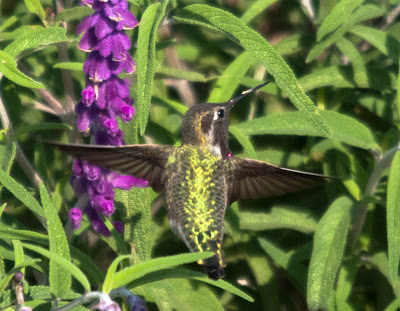How to Take Moving Objects
While a good picture of static objects like scenery depends on timing, lighting, accessibility etc., that of flying or moving objects mainly depend on their speed.
One common solution is to move the focusing point in the same direction and speed as that of the object while pressing shutter. This is also called panning. This will get clear images of the object and a blurring background, dramatizing the moving effect of the object.
The second solution is to increase the shutter speed as faster as possible. This also applies to panning to certain extend, because in the later case, its more challenging for one to control the shaking of the lens or camera body.
As per the universal rule of photography, higher speed is always the key to a clearer image, less blur. To achieve high shutter speed, one sometimes has to sacrifice image quality, using as high an ISO value as one can accept. While higher ISO will no doubt introduce higher level of noise, a well lit object actually produces less noise than expected. In fact, it can be much less when in a dark environment, at least to human eyes.
Sometimes, things do not always turn out to be as one's expectation. But never get too disappointed, even the results are not impressive when viewing at the original pixel level, display in smaller size can be eye-catching enough. In the case below, 6 snap shot of sandpipers flying makes a nice presentation. Sandpipers are small and agile in their movements. When they flight, their flying direction is hard to predict, making panning almost impossible. And they are usually very "shy", afraid of monstrous animals such as human being . Unless with great patience and a lot of time, it is difficult to get sharp image of them when they fly. The pictures below are taken in a fine day, with Nikon D300, a SIGMA 400mm zoom. Shutter speed is 1/3200s, aperture 5.6, ISO 640.
On the other hand, the humming bird below was taken at the same shutter speed of 1/3200, but with an ISO of 1600 to achieve high shutter speed. It is still not well focused because the camera was hand held and the photograph was taken in a hurry.
If more factors such as background, focus depth, framing, angle are to be perfected, more time and trials are definitely to be spared.
For more tips, the following links can be of some great references.
One common solution is to move the focusing point in the same direction and speed as that of the object while pressing shutter. This is also called panning. This will get clear images of the object and a blurring background, dramatizing the moving effect of the object.
The second solution is to increase the shutter speed as faster as possible. This also applies to panning to certain extend, because in the later case, its more challenging for one to control the shaking of the lens or camera body.
As per the universal rule of photography, higher speed is always the key to a clearer image, less blur. To achieve high shutter speed, one sometimes has to sacrifice image quality, using as high an ISO value as one can accept. While higher ISO will no doubt introduce higher level of noise, a well lit object actually produces less noise than expected. In fact, it can be much less when in a dark environment, at least to human eyes.
Sometimes, things do not always turn out to be as one's expectation. But never get too disappointed, even the results are not impressive when viewing at the original pixel level, display in smaller size can be eye-catching enough. In the case below, 6 snap shot of sandpipers flying makes a nice presentation. Sandpipers are small and agile in their movements. When they flight, their flying direction is hard to predict, making panning almost impossible. And they are usually very "shy", afraid of monstrous animals such as human being . Unless with great patience and a lot of time, it is difficult to get sharp image of them when they fly. The pictures below are taken in a fine day, with Nikon D300, a SIGMA 400mm zoom. Shutter speed is 1/3200s, aperture 5.6, ISO 640.
 |  |
 |  |
 |  |
On the other hand, the humming bird below was taken at the same shutter speed of 1/3200, but with an ISO of 1600 to achieve high shutter speed. It is still not well focused because the camera was hand held and the photograph was taken in a hurry.
If more factors such as background, focus depth, framing, angle are to be perfected, more time and trials are definitely to be spared.
For more tips, the following links can be of some great references.
- Mastering Panning (digital-photograph-school)
- Photography Tips: Photos That Capture Moving Objects Motion(dphotojournal)
- How to Pan a Moving Object (eHow)
- Tips on How to Photograph Moving Cars (brighthub)



